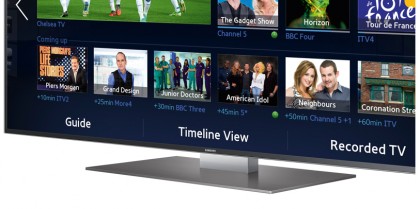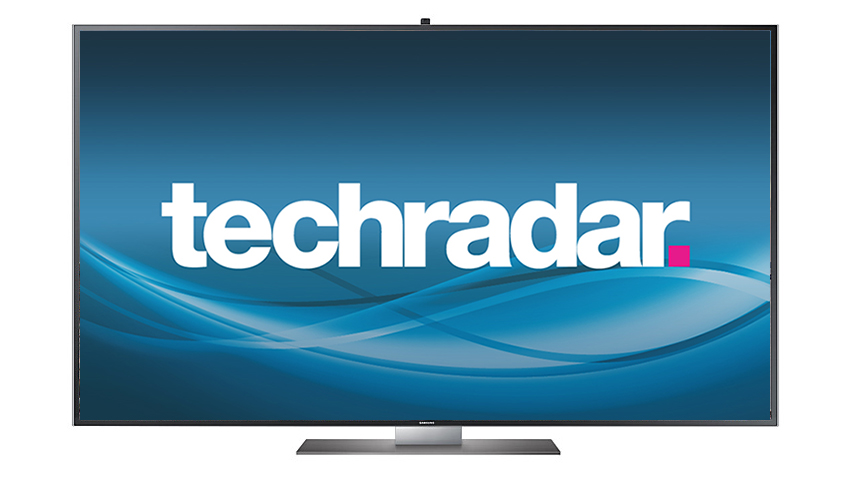Why you can trust TechRadar
Not surprisingly, this section kicks off with a look at native UHD content. And as usual this has to be prefaced by a mention of the sources used. In this case we watched a selection of cityscapes, landscapes and, um, prettily prepared food on a Samsung-supplied USB stick, along with a more diverse range of content – including some football and the Rio carnival – from a Sony 4K content server we had lying around. Neither of these sources, alas, is commercially available. But when you CAN get your hands on native 4K content, your jaw will be left gaping in awe at what you're witnessing.
For despite the UE55F9000 only enjoying a 55in screen - a size at which some would have you believe UHD can't deliver any significant benefit – the extra detail, resolution, colour subtlety and especially image depth delivered by having so many pixels to work with is palpable and a joy to behold.

It helps, too, that Samsung's processing is powerful enough to keep a lid on the motion blurring problems that can affect LCD technology, meaning that even action scenes and camera pans retain the sensational next-generation sharpness and clarity.
Going back to the point about the 55in screen size, it would be true to say that the impact of the UHD/4K pixel count isn't quite as potent as it is on Sony's 65in TV unless you sit very close to the screen.
However, there's no doubt that even from 'normal' viewing distances UHD/4K is worthwhile on a 55in screen, particularly when it comes to the density of the image (which feels like a vision of the real world rather than just a picture being reproduced by a TV); the greater perceived depth of the image; and the finesse of rendered colour blends.
In short, even after witnessing UHD/4K on Samsung's 'mere' 55in TV, we're still finding it hard to go back to our normal HD sets.
Upscaling
There are currently hardly any native UHD/4K 3D sources, but as noted earlier, the UE55F9000 is the first TV that upscales HD 3D images to UHD. This is an enormously challenging thing to do, given the need to deliver images at a fast enough rate to 'split' them between each eye to produce the active 3D effect, and the vast number of pixels that have to be calculated to make them UHD. But Samsung manages to deliver results that are nothing short of staggering.
In fact, we'd go so far as to say that they make 3D feel vital and worthwhile as a home entertainment format in a way we just haven't seen before. Not even with the very best normal HD 3D TVs.
There are two main reasons for making such a bold statement. The first is that the extra pixels on offer enable the screen to render a greater and more believable sense of 3D depth, underlined by the way the extra subtlety of the set's colour rendition helps objects achieve a more three-dimensional solidity.
More realistic 3D
The second key point is that the extra resolution makes 3D images look more like real life. We mentioned this in the section on UHD 2D as well, but given that the point of 3D is to make pictures look more like your experience of the real world, it follows that seeing 3D images that enjoy a visual density much closer to what your eye perceives in your daily life makes the 3D impact much more instant and powerful.
Comparing the UE55F9000's 3D images with those of Sony's 65X9005A 4K TV, which uses a passive 3D approach, the extra resolution and detail on show with the Samsung's images is startling.
On the other hand, the Sony's images enjoy slightly richer colours, slightly more brightness, and no crosstalk or flicker (there are some occasional traces of crosstalk ghosting on the Samsung's images, and you can see flicker if you're watching in a bright room). There's no doubt, though, that for some people the sheer visceral impact of the UE55F9000's UHD 3D images will be simply irresistible.
Sony proved with the 65X9005A that even though the higher resolution technology is still in its infancy as a technology, it's already possible to upscale 2D HD images to UHD/4K levels very effectively. Which is pretty crucial given that for now, at least, it's upscaled HD material that will take up the vast majority of your viewing time.
Happily the UE55F9000's upscaling keeps up with that of its Sony rival – even if it takes a slightly different approach.
Crisper details
The key point is that Samsung has opted to go for a slightly sharper, crisper, more aggressively detailed upscaled image than Sony – an approach that's high on impact and really means you can appreciate the UHD joys of the TV even without UHD content.
The Sony set, by comparison, compensates for not looking quite as crisp and sharp as the Samsung's upscaled HD images by delivering palpably more colour richness and definition – an effect which can with some content actually make pictures look even more subtle and ultra-high resolution than those of the UE55F9000.
The bottom line is that when it comes to upscaling to UHD/4K, the UE55F9000 and 65X9005A deliver a score draw, with choosing between the two sets' quite different approaches coming down to a matter of personal taste.
What about standard def?
The UE55F9000's talent for interpolating detail is even more startling if you're forced to watch standard definition on it from time to time. The resulting images are a touch noisier than standard definition as upscaled on the 65X9005A, but if you want to feel a more overt sense that you're watching a UHD screen, the Samsung may prove slightly more satisfying. But really you shouldn't even think about standard definition performance as a serious factor in any UHD buying decision.
So far our assessment of the UE55F9000's pictures has focused predominantly on the impact of the screen's UHD resolution. But there are other areas to quickly cover too.
Its contrast performance, for instance, is outstanding. The quality of Samsung's local dimming system manages to rival that of Sony's top-end TVs in the way it boosts black level depth and contrast without generating distracting 'blocks' of light around especially bright objects. Dark scenes thus look considerably richer and punchier than they do even on Samsung's F8000 TVs.
Colours are naturally and vividly toned meanwhile, as well as revelling in the extra colour finesse made possible by the panel's huge pixel resolution.
While the UE55F9000's pictures sail comfortably closer to perfection than those of any lower-resolution Samsung TV, though, there are still a few minor issues to make you aware of.
Lag, judder and black bars
First, we measured a slightly high input lag of 60ms from the screen, which could potentially affect your gaming skills. Second, 3D can suffer a bit of judder, which requires the use of some fairly high-level motion processing to address. Third, it's a pity Samsung hasn't replicated the Cinema Black feature of the F8000 and F7000 TVs on the UE55F9000, since this means that if you're watching wide aspect ratio sources with black bars above and below them on the UHD model, you're a bit more likely to notice shifts the brightness levels of these black bars.
Finally, the set's Dynamic and Natural picture presets are much too aggressive with their approach to sharpness, causing pictures to look gritty, uneven and stressy around high-contrast edges, at least when you're watching upscaled sources. The Standard (default) and especially Movie presets work well, though, even for people not confident enough to start tweaking picture settings themselves through Samsung's in-depth calibration menus.
John has been writing about home entertainment technology for more than two decades - an especially impressive feat considering he still claims to only be 35 years old (yeah, right). In that time he’s reviewed hundreds if not thousands of TVs, projectors and speakers, and spent frankly far too long sitting by himself in a dark room.

